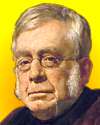
On 27 Jul 1801, George Biddell Airy was born, who was the seventh Astronomer Royal. He made a mathematical study of the rainbow and researched optical interference fringes. Airy also computed the density of the Earth by swinging a pendulum deep in a coal mine and comparing its swing with a pendulum on the surface. If you remember your science class experiment timing the swing of a pendulum, you know the fundamentals of Airy’s apparatus and measurements.
Airy was given access by a mine owner at Harton Pit outside of South Shields, County Durham, in North East England. Of course, the miners knew that something grand was taking place as the experiment was being run at their mine, and it was the talk of the local community. Airy rewarded their interest with a lecture. The basic concepts are simple enough that Airy was able to satisfy the curiosity of the community by giving a lecture on 24 Oct 1854 at the town hall. His audience was clearly pleased. A few months later, a printed copy of his lecture was published, Lecture on the Pendulum-Experiments at Harton Pit.
This is simple to follow, and so makes interesting reading, if you have experienced a pendulum experiment and know the inverse square law. If you are teaching these topics, your students will be interested to see how their laboratory activity compares with Airy’s work to determine a measurement of fundamental importance.
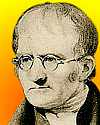
On 26 Jul 1844, John Dalton died, the English chemist, who in 1803 proposed the Atomic Theory and developed a table of atomic weights for an atoms of each elements relative to an atom of hydrogen as one atomic mass unit. As one of the fathers of modern physical science, if you want a very readable and interesting work about Dalton, this is a book to have in your personal library. [Today's book pick is: John Dalton and the Atomic Theory: The Biography of a Natural Philosopher (Science Study Series), by Elizabeth C. Patterson]. Dalton’s lifetime spanned the Industrial Revolution, and the author sets this scientist within that hectic and innovative scene. Dalton was a self-educated schoolmaster who is now known as a provincial genius for his substantial contribution to science.
It is available from Amazon, typically about (As of earlier time of writing - subject to change.)
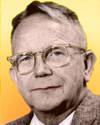 | No one who saw it could forget it, a foul and awesome display. Recounting his memories of the first atom bomb test on 16 Jul 1945. |
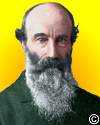 | Perfect concordance among reformers is not to be expected; and men who are honestly struggling towards the light cannot hope to attain at one bound to the complete truth. There is always a danger lest the fascination of a new discovery should lead us too far. Men of science, being human, are apt, like lovers, to exaggerate the perfections and be a little blind to the faults of the object of their choice. |
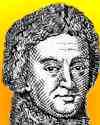 | However dangerous might be the shock of a comet, it might be so slight, that it would only do damage at the part of the Earth where it actually struck; perhaps even we might cry quits if while one kingdom were devastated, the rest of the Earth were to enjoy the rarities which a body which came from so far might bring it. Perhaps we should be very surprised to find that the debris of these masses that we despised were formed of gold and diamonds; but who would be the most astonished, we, or the comet-dwellers, who would be cast on our Earth? What strange being each would find the other! |
| Before you look at today's web page, see if you can answer some of these questions about the events that happened on this day. Some of the names are very familiar. Others will likely stump you. Tickle your curiosity with these questions, then check your answers on today's web page. | |
| Births | |
| | Hans Fischer was a German biochemist, born 27 Jul 1881, who was awarded the Nobel Prize for Chemistry in 1930 for research into the red blood pigment, and chlorophyll (the green pigment in plants). He further showed that they share a similar structure, but with subtle differences. What is the red blood pigment? |
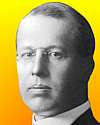 | Bertram Borden Boltwood, born 27 Jul 1870, was an American chemist and physicist whose work on the radioactive decay of uranium and thorium was important in the development of the theory of isotopes. Boltwood studied the “radioactive series” whereby radioactive elements sequentially decay into other isotopes or elements. What was the stable element at the end of these decay series? |
| Deaths | |
 | On 27 Jul 1844, John Dalton died. He proposed the Atomic Theory in 1803 in which he inferred proportions of elements in compounds by taking ratios of the weights of reactants. He set the atomic weight of hydrogen to be identically equal to one and developed the table of atomic weights for the other elements. Hence he is known as one of the fathers of modern physical science. What other long-term scientific interest did Dalton pursue, which he began before chemistry? |
| Events | |
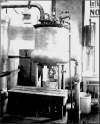 | On 27 Jul In 1921, Canadians Sir Frederick Banting and Charles Best succeeded in the isolation of the anti-diabetic component of the pancreas. What was the substance they isolated? |
 | On 27 Jul of a certain year, the first electric automobile, designed by Philip W. Pratt, was demonstrated in Boston, a tricycle powered by six Electrical Accumulator Company cells, weighing 90 pounds. In what decade was this first electric automobile displayed? |
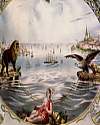 | On 27 Jul 1866, Cyrus W. Field finally succeeded, after two failures, in laying the first underwater telegraph cable. It was 1,686 miles long, and laid by the Great Eastern, the largest ship then afloat. Where was this first cable laid? |
Fast answers for the previous newsletter for July 26: one would rotate light passed through it polarized in a clockwise fashion, the other counterclockwise. • Carl Jung • mathematics • 20.9 kg (46 pounds) • NutraSweet.
 If you enjoy this newsletter, the website, or wish to offer encouragement or ideas, please send feedback by using your mail reader Reply button.
If you enjoy this newsletter, the website, or wish to offer encouragement or ideas, please send feedback by using your mail reader Reply button. Your click on a Facebook, StumbleUpon, or other social button on the site webpages is also a welcome sign of appreciation. Thank you for using them.
© This newsletter is copyright 2020 by todayinsci.com. Please respect the Webmaster's wishes and do not put copies online of the Newsletter — or any Today in Science History webpage. (If you already have done so, please remove them. Thank you.) Offline use in education is encouraged such as a printout on a bulletin board, or projected for classroom viewing. Online, descriptive links to our pages are welcomed, as these will provide a reader with the most recent revisions, additions and/or corrections of a webpage. For any other copyright questions, please contact the Webmaster by using your mail reader Reply button.
--
If you do not want to receive any more newsletters, Unsubscribe
To update your preferences and to unsubscribe visit this link
Executive Real Estate Business Class
-
"It was like a man with wings. It wasn't like anything you'd see on TV or in a monster movie." ...
About the publisher
Search This Blog
Blog Archive
-
▼
2021
(585)
-
▼
July
(50)
- Newsletter for Saturday 31 July.
- Newsletter for Friday 30 July.
- Power off and play this summer!
- Newsletter for Thursday 29 July.
- Newsletter for Wednesday 28 July.
- Newsletter for Tuesday 27 July.
- Newsletter for Monday 26 July.
- Newsletter for Sunday 25 July.
- Newsletter for Saturday 24 July.
- Newsletter for Friday 23 July.
- Newsletter for Thursday 22 July.
- Newsletter for Wednesday 21 July.
- Newsletter for Tuesday 20 July.
- Newsletter for Monday 19 July.
- The Machines That Built America Premieres Tonight
- Newsletter for Sunday 18 July.
- Newsletter for Saturday 17 July.
- Newsletter for Friday 16 July.
- Newsletter for Thursday 15 July.
- Newsletter for Wednesday 14 July.
- Newsletter for Tuesday 13 July.
- On This Day for July 12 - Geraldine Ferraro design...
- Newsletter for Monday 12 July.
- Inventing ‘The Machines That Built America’
- On This Day for July 11 - Duel between Aaron Burr ...
- Newsletter for Sunday 11 July.
- On This Day for July 10 - Telstar 1 launched, John...
- Newsletter for Saturday 10 July.
- On This Day for July 9 - Catherine the Great assum...
- Newsletter for Friday 9 July.
- New Season! Hope, Through History Podcast
- On This Day for July 8 - Vasco da Gama's first voy...
- Newsletter for Thursday 8 July.
- Ending soon: savings that pop! 🎆
- On This Day for July 7 - Hawaiian Islands annexed ...
- Newsletter for Wednesday 7 July.
- On This Day for July 6 - Anne Frank forced into hi...
- Newsletter for Tuesday 6 July.
- On This Day for July 5 - Israel's Law of Return pa...
- Newsletter for Monday 5 July.
- On This Day for July 4 - Declaration of Independen...
- Newsletter for Sunday 4 July.
- July 4th Sale at the HISTORY Store!
- On This Day for July 3 - Battle of Gettysburg ende...
- Newsletter for Saturday 3 July.
- On This Day for July 2 - Civil Rights Act signed, ...
- Newsletter for Friday 2 July.
- July 4th savings that pop!
- On This Day for July 1 - Dominion of Canada establ...
- Newsletter for Thursday 1 July.
-
▼
July
(50)
-
Blogroll
-
About
HistoryFact










0 comments:
Post a Comment